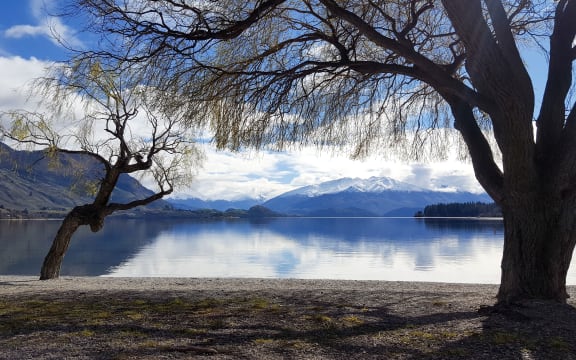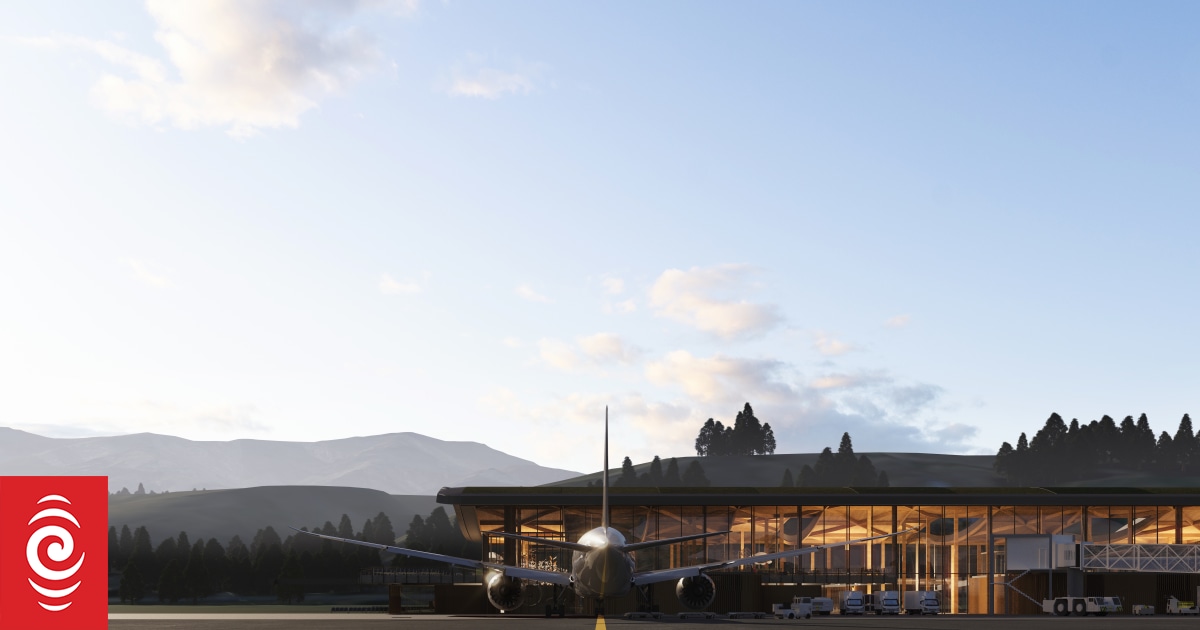An artist’s impression of the proposed Tarras Airport.
Photo: Supplied
Otago tourism agencies have spoken out against the proposed airport at Tarras, concerned about the “overtourism” they say would be created from a third airport in the immediate region.
Christchurch Airport recently unveiled more detail for its controversial proposal to build an airport in the small Central Otago settlement, which was home to just a few hundred people.
Its preferred runway alignment would see flights departing over Cromwell or through the Lindis Valley.
With the runway between 2.2 and 2.6 kilometres long, it would be the third longest in Aotearoa and capable of flights to and from Australia, the South Pacific and Southeast Asia.

Wānaka.
Photo: RNZ / Tess Brunton
In a joint statement, Destination Queenstown and Lake Wānaka Tourism said the airport would drive an increase in visitor numbers to the region on a scale never seen before.
But they said this was not aligned with the new regenerative tourism approach in the Southern Lakes.
“The goal of regenerative tourism by 2030 reflects feedback from communities around the region and is centred around ensuring we are thriving not just economically but also socially, culturally and environmentally. Part of the strategy is encouraging value over volume from our visitors,” the agencies said.
Destination Queenstown and Lake Wānaka Tourism said an increase in numbers on that scale would also put more pressure on the already stretched visitor infrastructure in Queenstown and Wānaka.

Queenstown.
Photo: 123rf
“The Views on Tourism research shows that residents would like to see a focus on reducing the environmental impact of visitors through encouraging shifts in visitor behaviours and reducing carbon footprint and waste produced by visitors and improving infrastructure,” they said.
Christchurch Airport chief strategy and stakeholder officer Michael Singleton said the proposal could be environmentally sound and pointed to the airport’s research, which showed an additional 500,000km would be travelled on the roads of the lower South Island every day by 2050 if people could not fly in and out of the Central Otago and Queenstown Lakes districts directly.
But Singleton said the proposed airport was to serve the entire Central Otago region – not just Queenstown and Wānaka.
“We acknowledge the Queenstown area has current capacity constraints on infrastructure which is reflective of how, as a country, we haven’t planned our infrastructure well for the future. This is at the heart of what our project is looking to overcome.
“It’s worth noting that a new airport doesn’t create the demand for travel, it just serves it. The demand to travel to and Central Otago will continue to grow even if air capacity is constrained. Well publicised future investment in attractions and accommodation in Queenstown and Wānaka reflects that growth is being accommodated for.”
Singleton said its projections of demand were conservative, but no assumptions were made as to long haul travel.
“Routes and destinations will always be a choice for airlines. What is most important as we look at a low carbon future is airlines are able to use their best and most efficient aircraft.
“We are supportive of the view that tourism needs to become more sustainable and regenerative. That’s why, as an airport, we have led the world globally in carbon reduction. We apply this thinking to our view on the future of aviation and see our role is to support the decarbonisation of aviation by decoupling air travel from carbon emissions.
“We believe that organisations tasked with ensuring the long-term prosperity of their communities should consider the environmental, social and economic impacts of any decisions.
“Earlier reports obtained by QLDC found that if airport capacity is constrained at current limits, the Queenstown Lakes district alone will forego an estimated $350 million in annual GDP on average between 2030 and 2050.”
Meanwhile, Sustainable Tarras – who are opposed to the airport – said it was willing to fight the proposal all the way to the Environment Court if necessary.

















%20(2)%20(1).jpg)


Discussion about this post